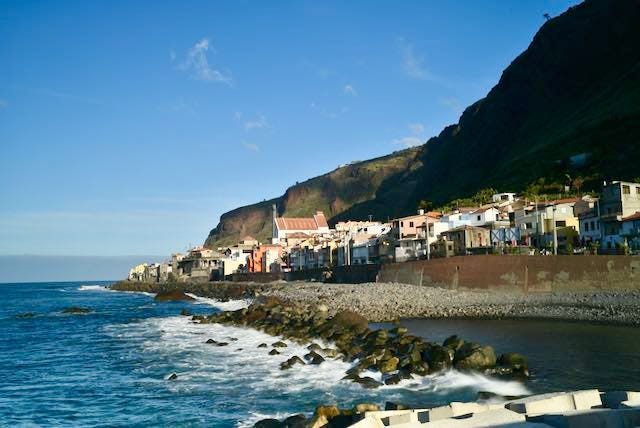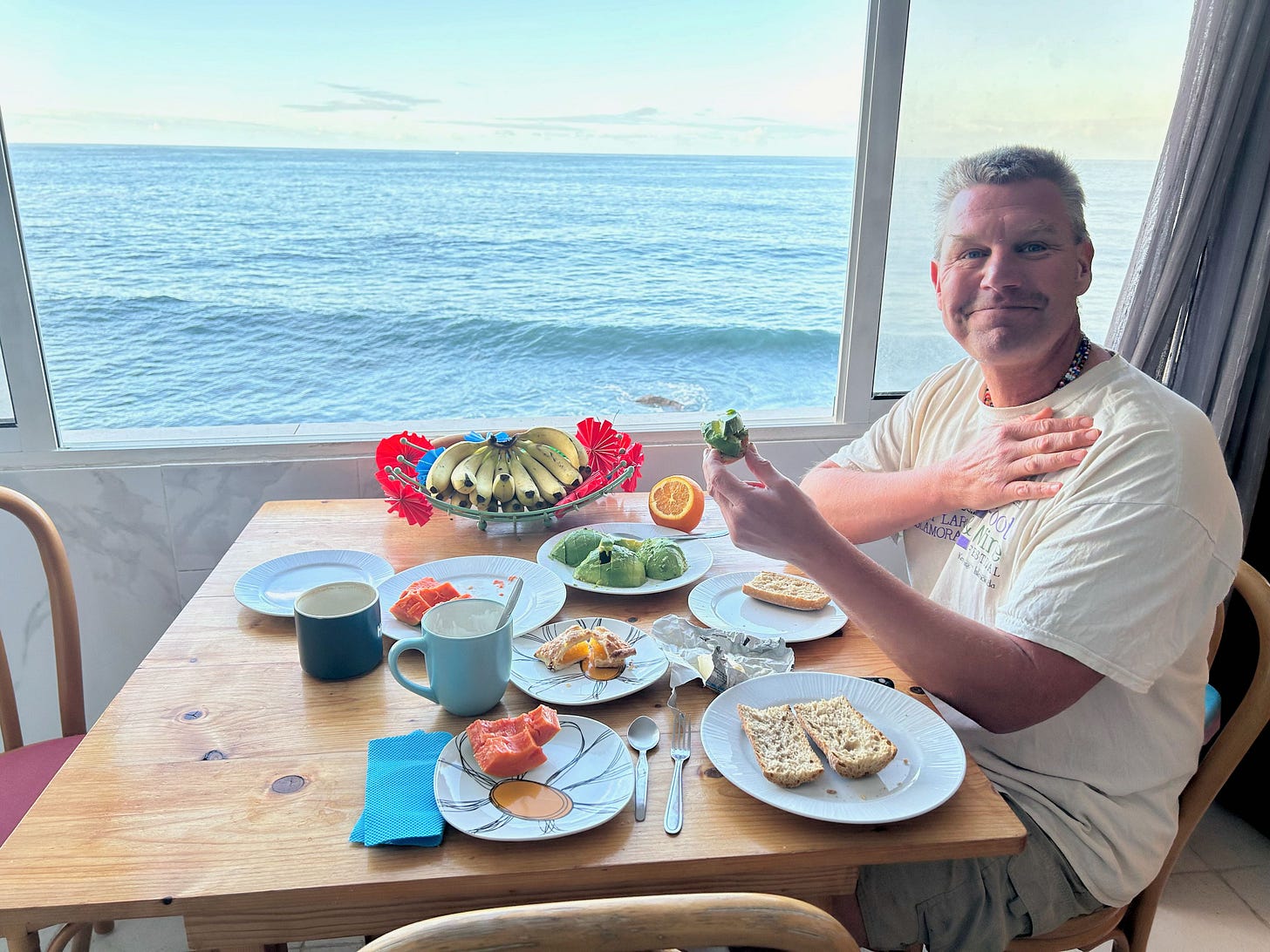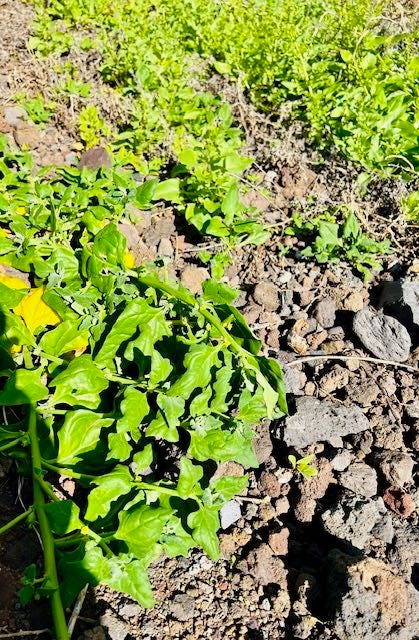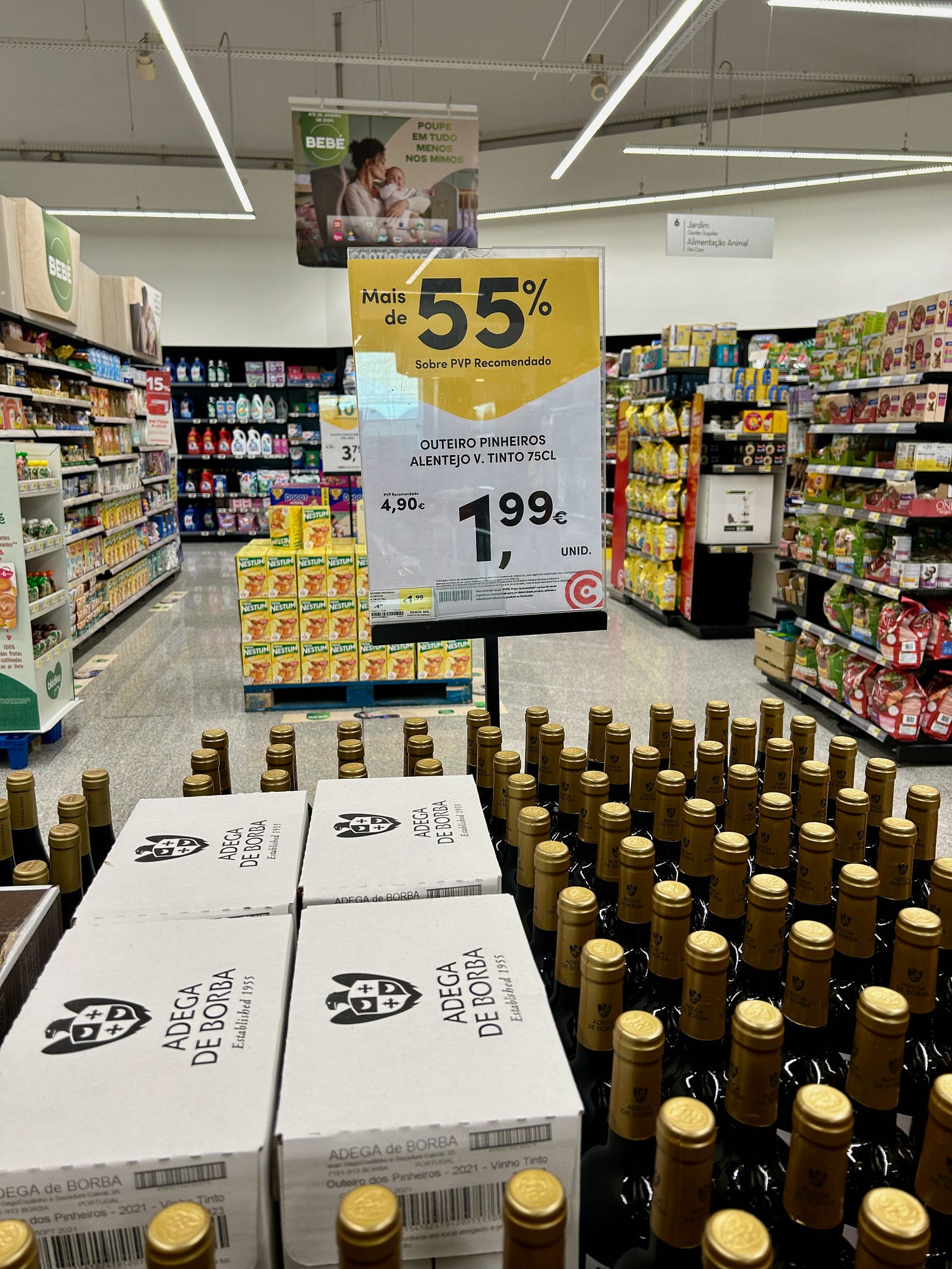First, let’s qualify here that when I’m talking about “travel,” I don’t mean “vacation” in the traditional sense of an escape from everyday life for pure relaxation.
While I’m all for some downtime at the beach and savoring a sunset with a glass of wine, that’s not the pure end goal behind John and I planned this trip to Madeira or other adventures over the years.
Travel to us means multiple things within our entrepreneurial lifestyle (see reason #7) with the driving current of reaping the benefits of being in a new place, experiencing a different culture, eating new foods and bottom line stretching ourselves out of our comfort. New contexts spark new ideas as well as give us the time and ripe space to process the past and plan for the future.
That said, major travel was on hold for us for a while now, both due to the pandemic and my elder care life chapter being sole care giver for my parents and not feeling comfortable with international jaunts far away.
It’s been quite the experience of rekindling this travel muscle of ours this past month, both embracing the changes that have taken place since we last changed continents (Affordable SIM card! Google Maps!) as well as the reality that we are no longer twenty-somethings backpacking (and yes hitchhiking) through New Zealand In the early 90s.
Right now, a priority for us in crafting this Madeira trip is — big surprise — climate and weather. Before COVID-19, we had been regularly heading to warmer domestic spots, typically San Diego in January and February, technically off-season there with lower rental rates.
Same thing here now in Madeira: It’s technically winter and off-season which is perfect for us as that means less crowds, lower rates and still averages of temperatures in the 60s F/20s C (learning metric!)
Cold weather aggravates John’s both Lyme and various high school football knee injuries and oh twist my arm to go somewhere where I don’t have to wear socks. We found a warmer winter climate also boosted both our overall physical health as we could prioritize being outside and moving our bodies.
But how do you make all those pieces work? What have we learned to strategically build travel into one’s overall lifestyle and business to make the bottom financial line work?
Here’s a starter list of both practical strategies with a side of our own priorities and values that we’ve developed over the years, reflecting our and entrepreneurial approach to life.
1. Invest in Lodging
A number one piece of our travel pie is lodging and to find that place that both fits the budget while, importantly, delivering on the scenic opportunity to be outside. For us during winter travel to warmer places, that criteria has typically been proximity to the ocean, ideally right on the water.
We’ve learned for us that there’s something magical about being as close as we can get to the shoreline, hearing the waves and looking out at sunrises and sets that is a true escape and so worth the price of admission.
That’s been our criteria — proximity to water — both back when we did domestic winters in San Diego and jaunts to Florida and Hawaii. Yes, you pay a premium but (see #3 & #4) we both really maximize the location and rental aspect and save there.
John took on lodging research here on Madeira that brought us to our first rental in Paul Do Mar, a smaller seaside fishing village on the southwestern side of the island. Channeling his inner meteorologist, he put the time into finding the part of the island that generally has the most sunshine and overall best weather, including maximum sunset potential.
We do economize on size of the place. Who needs much interior space when we have the ocean? That can sometimes be a challenge to find a smaller place as a lot of rentals can have way more bedrooms and space than we need, along with a higher price.
2. Shop supermarkets versus restaurants
“Eat local” when we travel means grocery shopping alongside locals, from tapping into the main supermarkets to farmers markets to finding the bakery lady who drives around Paul do Mar in the morning with fresh bread (and those pastries!). The average grocery store can be a whole new experience of things to try and much more economical than any restaurant setting.
In Madeira, key things we’ve been eating via stores are oranges as citrus is in high season along with Madeira bananas, papaya pork sausages, native cheeses and quirky fun specialties like tremoços, pickled lupin beans that are a traditional snack.
3. Sorta wild forage
We admittedly are not super knowledgeable in the fully wild foraging world, but we can recognize some things — like (bonus!) New Zealand spinach which is exactly the same varietal we grew in Wisconsin and John found a bountiful wild patch not far from where we’re staying.
We’ve probably harvested at least 50 Euros worth of fresh, organic spinach that we’ve in salads, on sandwiches and on pizza (see #4)
4. Use that kitchen
We make good use of that rental kitchen, saving a lot of money from everything from morning coffee to packing sandwiches and snacks for trail hikes. John as taken on “bolo do caco,” a Portuguese flat bread with sweet potatoes in the yeast dough and then grilled on the stove.
Understandably, this strategy works well for us as we love to cook and even embrace the extra challenge of cooking in a kitchen that is not our own. This means adapting to a sometimes random and limited selection of pots and pans and gear and pantry, including herbs and seasonings, although generally we’ve found rentals overall with decently stocked kitchen gear.
It’s our own version of “Iron Chef” as we find it a fun culinary challenge to adapt to what we have and often learn some new things in the process. In Madeira, that means using an induction cooktop for the first time, which allows higher, more efficient power for rapid increases in temperatures. Bonus!
Stocking our kitchen with pantry basic staples is key, things like:
Flour
Yeast
Sugar
Milk
Eggs
The above can be used in a lot of basics; two of our favorites include:
Crepes
You’ll find a version of the pancake in just about every culture because it is so adaptable. We like this basic crepe recipe from Sally’s Baking Addiction that uses ingredients we have on hand (flour, sugar, eggs, milk) and can be easily made the night before.
Pizza
We need to get creative using whatever baking pans are available (we learned this recipe from our friends who started La Fortuna Pizza works well the two 9x13 pans we had).
The key with both of these is to use crepes and pizza as an easy “base” and then top with local bounty. John’s been making this fabulous crepe with Madeira bananas and a Portuguese hazelnut spread version of Nutella. That foraged spinach with some local pork sausage make the perfect pizza topping.
5. Focus on (free!) outdoor activities
A big underlying reason for our winter travel in warmer climates is to keep healthy through physical activity and hiking is free here on Madeira. That fact that Madeira offers so much hiking opportunity via their levada irrigation channels alongside the rugged mountainous beauty served as a key reason for this destination, and we’ve taken full advantage.
Will share more on the specific hiking scene (and John’s photos!) here on Madeira, but the underlying idea here is the fact that this bounty of unique outdoor opportunities drove out decision to land here specifically.
6. Don’t pay for parking
This is both a practical tip that also exemplifies the core philosophy behind our approach to frugal travel: don’t pay for something if you don’t have to! This generally means parking a little further on the outskirts of an attraction like a beach and walking in. You can usually spot where free parking kicks in on Madeira as that’s where you see locals starting to park and walk in.
Asking locals (including once a policeman) on if an area is OK to park in goes a long way in mastering frugal parking. Early on when we were navigating parking near the beach in Ribeiria Brava, we weren’t sure if a certain lot was free and asked a local chap who gave us a master class in local knowledge: If the parking space is outlined in white paint, it’s free. It you see blue paint, it’s paid. Yellow paint is a definite tow zone.
That piece of insight already saved us a bunch of Euros. And knowing that we can find a decent Portuguese bottle of wine in that grocery store on special for about two Euros, let’s just say we’d rather put money there than into rental of a rectangle of asphalt.
7. Travel as a business expense
Here’s where we employ a very clear distinction between “vacation” and the type of travel we do, building it as part of our business and thereby business expenses: Wherever we go and whatever we do ties back to our business.
Yes I used the word “business” three times in one sentence to stress the point that indeed, as it is both a key distinction of the travel we do and exemplifies the entrepreneurial lifestyle we’ve led for the last three decades.
This is a concept we write about in much more detail in our book, ECOpreneuring, about building a lifestyle business around values of sustainability while tapping into the economic power of entrepreneurship. We can explore this more if folks are interested (do let me know), but I wanted to introduce this underlying concept now as it drives so much of our broader lifestyle, including travel.
Specific to travel as related to our business, this is often John’s photography, our writing and my women in agriculture work, particularly from the research and interview phase. Yes there is the documentation side, receipt saving, expense tracking and all of that, but the opportunities definitely outweight any logistics.
Check out more photos (and ordering options) from John D. Ivanko on Alamy











What a fabulous post! Thanks for sharing! I love the photos...hugs hugs hugs!